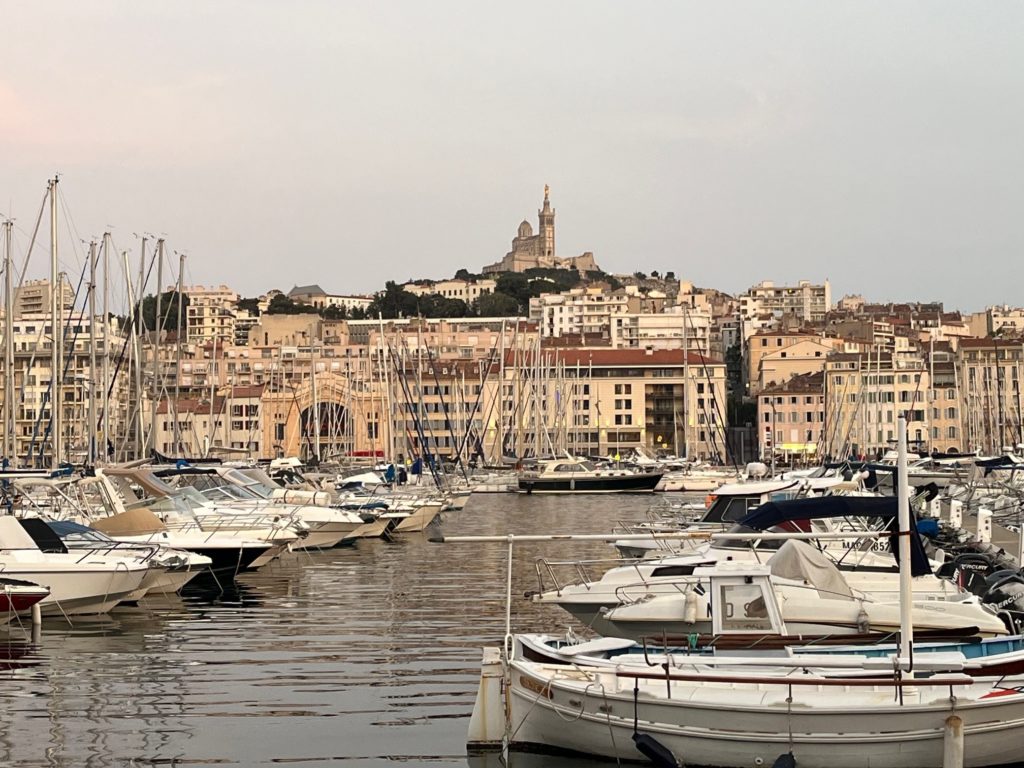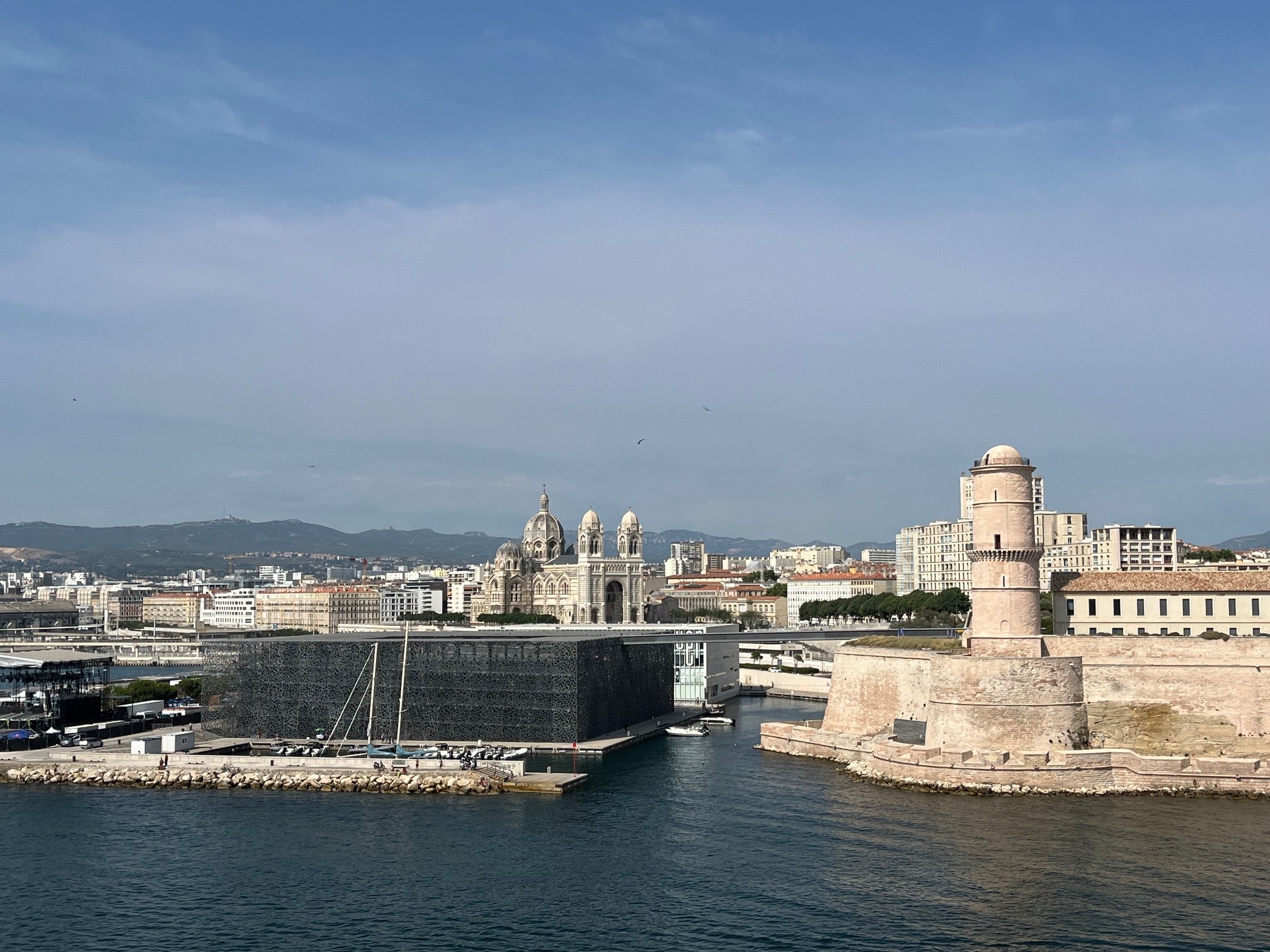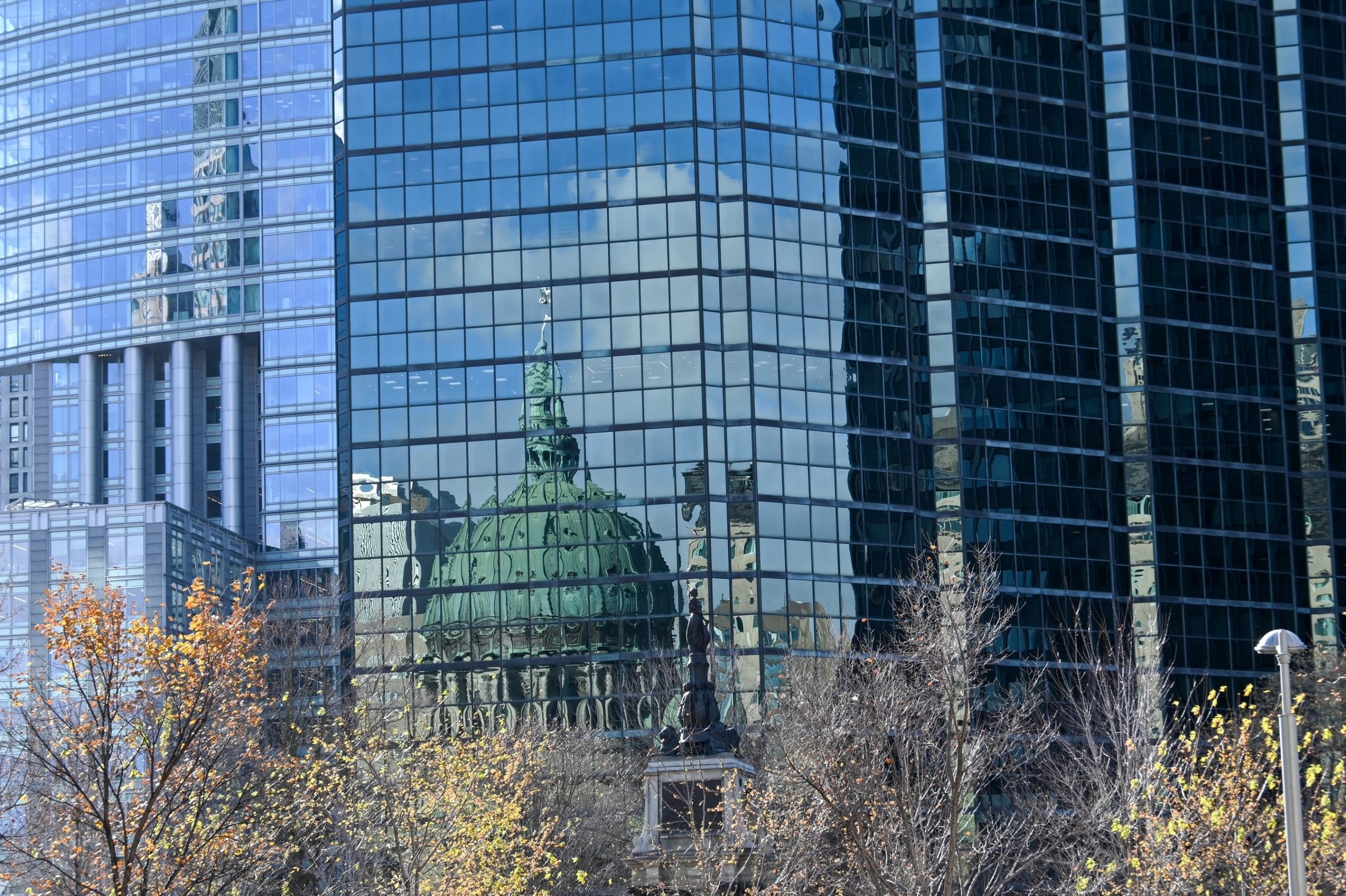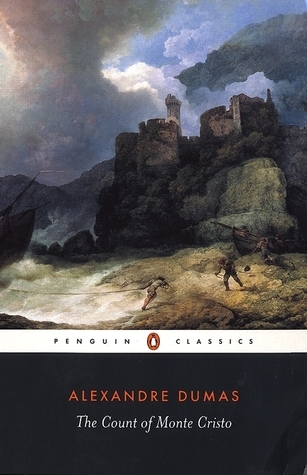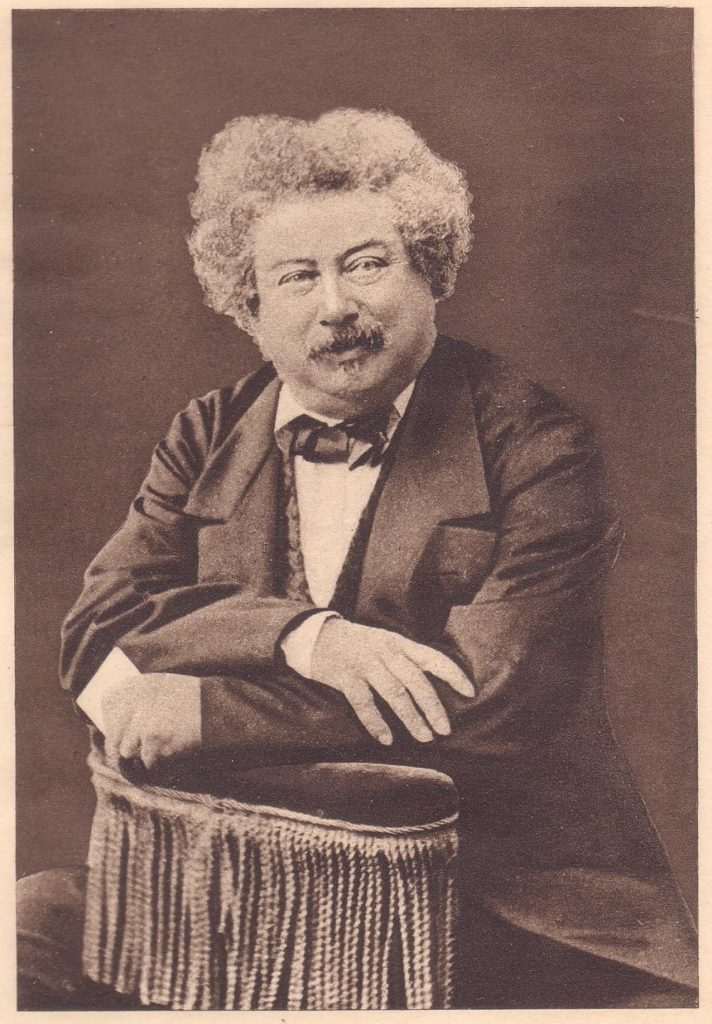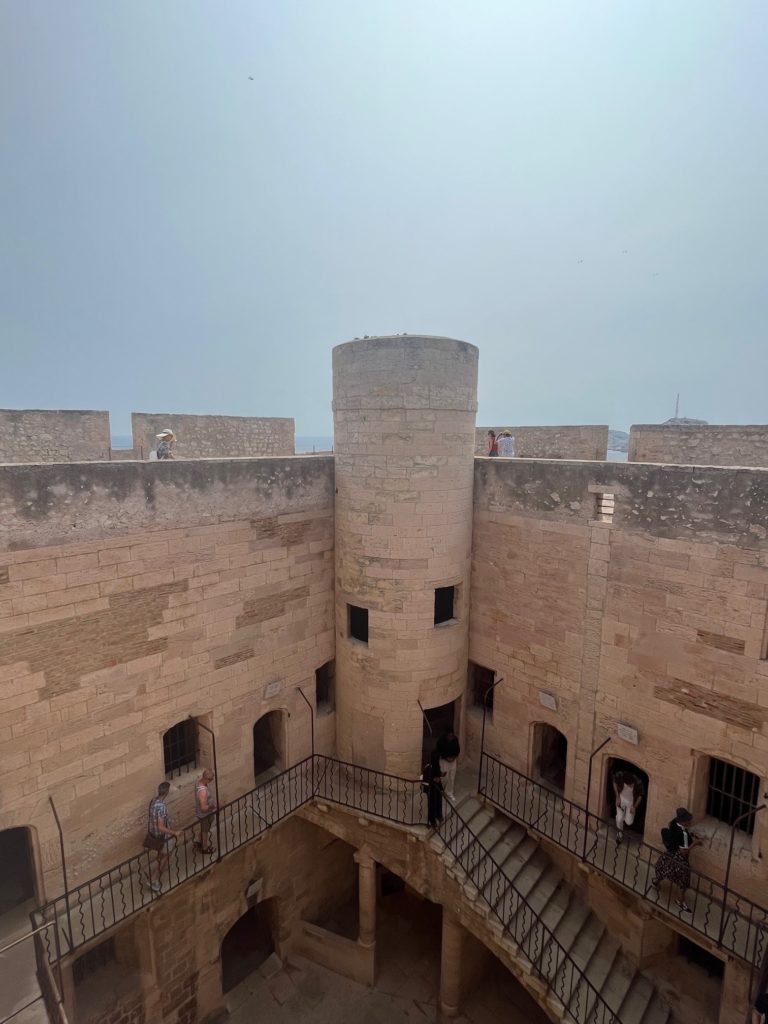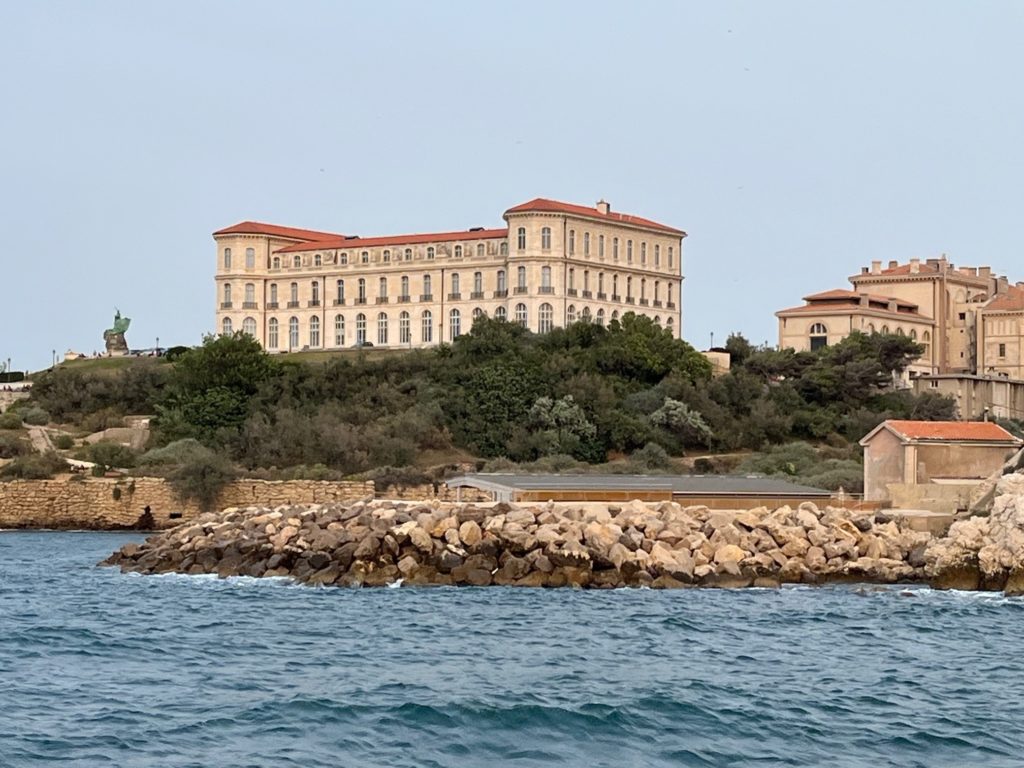At the end of June in Marseille, you had to get up early to enjoy a bit of fresh air. I left my hotel, located just opposite the Palais du Pharo where my conference was being held, and after an espresso and a pain au chocolat at the local bar-tabac, I headed down to the Plage des Catalans. At seven o’clock, the gate opens, I leave my towel and shoes on the sand and step into the calm, warm Mediterranean water. It’s hard to imagine a more invigorating start to the day: I swim the length of the beach several times over, looking out over the city on one side, topped by the peak of the Notre-Dame de la Garde Basilica, and the sea and the Frioul islands on the other.
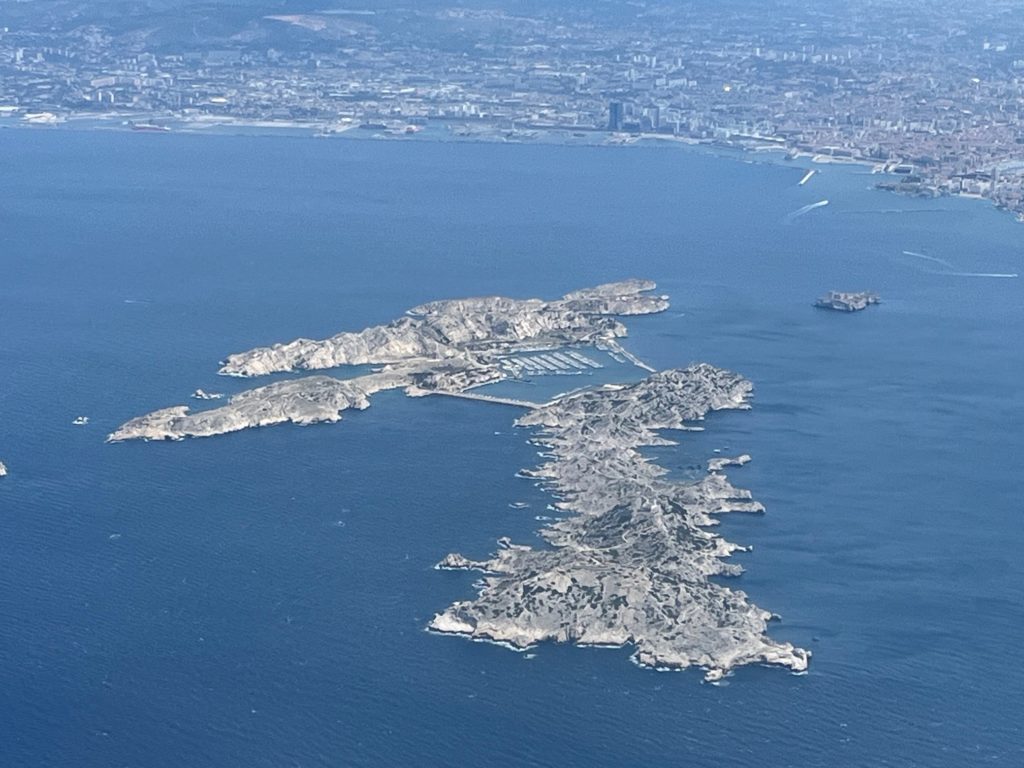
The Plage des Catalans reminded me of “The Count of Monte Cristo” by Alexandre de Dumas. It was there, in 1815, in the heart of a neighborhood that once welcomed immigrants from Spain, that Edmond Dantès, a merchant navy officer, met Mercédès, the beautiful Catalan woman for whom his heart was beating. But her cousin, Fernand Mondego, is jealous and conspires with Danglars, a corrupt accountant on the same ship as Dantès, and the deputy prosecutor de Villefort, to launch a false accusation and have Dantès arrested, so that he spends fourteen years locked up in the Château d’If.
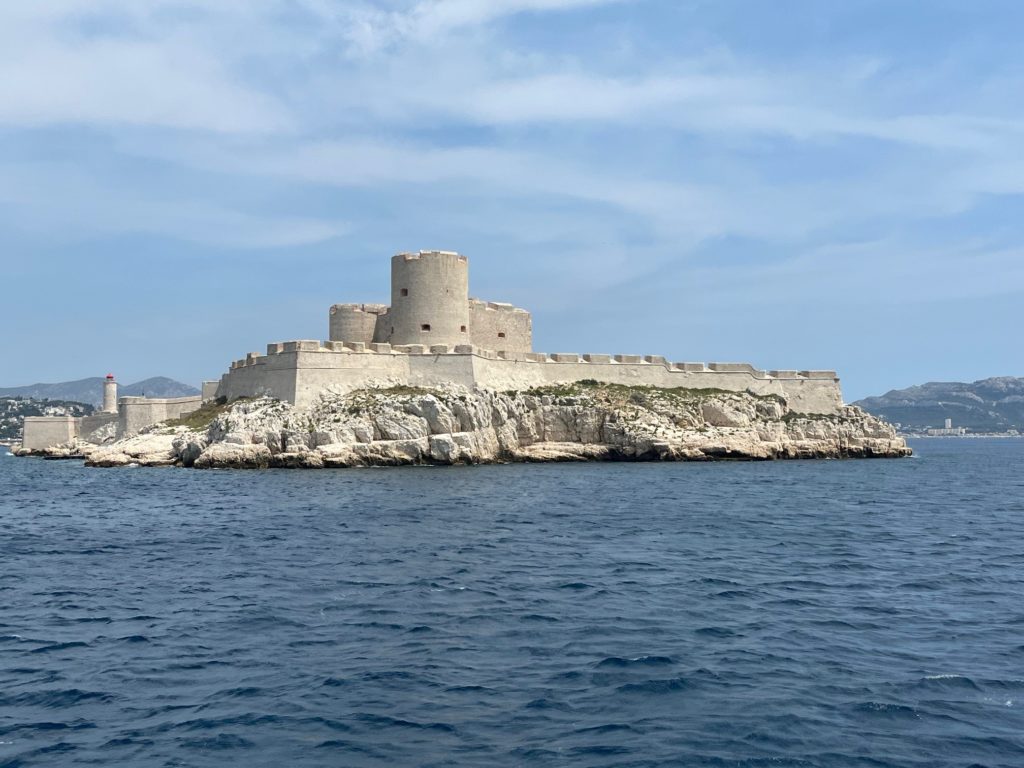
I devoured “The Count of Monte Cristo” one summer when I must have been thirteen. I took it up again with the same pleasure, just about twelve years ago: I read about forty pages a day on the subway, and in the evening, before they went to bed, I would recount the day’s chapters to my children. They were fascinated by this story of adventure, love, and revenge.
And so, of course, while staying in Marseille, I couldn’t miss a visit to the Château d’If, the former fortress and then later prison that sits on one of the Frioul islands off Marseille. If is difficult to get to, as the island has no natural harbor and the boats that dock alongside the rock are cancelled in case of strong winds. So, I patiently waited for the right time slot to make my pilgrimage to this prison, which housed many real-life prisoners, such as Huguenots during the Wars of Religion and leaders of the Paris Commune, but whose most famous inmate is a fictional character. You can even visit Edmond Dantès’ cell, and a tunnel has been dug to communicate with the Abbé Faria’s cell, as in the book. In Alexandre Dumas’ novel, it is this other prisoner who reveals the existence of a hidden treasure on the island of Monte Cristo. When the old abbot dies, Dantès takes his place in the shroud thrown into the sea, thus escaping from the prison-island.
After his escape, Dantès arrives in Paris as the wealthy Comte de Monte-Cristo. The three Marseillais who had plotted to throw Edmond Dantès into prison now hold the upper hand in Paris: Danglars has become a wealthy banker, Villefort a royal prosecutor. Fernand Mondego has become the Comte de Morcerf, peer of France. He has married Mercédès, to whom he has led to believe that Dantès is dead. Monte-Cristo patiently plans his revenge and brings down those who once threw him into jail: Villefort sinks into madness, Danglars goes bankrupt and Morcerf commits suicide. Mercédès, who was one of the first to recognize Dantès behind the extravagant Count arriving from nowhere, leaves her title and fortune in Paris and returns to Marseille to live in Edmond’s father’s old house, which he has bequeathed to her. As for the Count of Monte-Cristo, he heads off at sea, wondering whether he had the right, in carrying out his revenge, to take justice into his own hands and thus take God’s place.
A few years ago, I also read ” Total Chaos (Total Khéops)” by Jean-Claude Izzo, an excellent crime novel set in Marseille. Recalling them side by side, I’m struck by certain similarities with Alexandre Dumas’ novel. Ugo, Manu and Fabio are three inseparable friends who grew up in the tough neighborhoods of the city. Many years later, Manu has been murdered and no one understands why. Ugo returns to Marseille, presumably to avenge Manu. He kills one of Marseille’s underworld kingpins, only to be gunned down himself. Fabio Montale, for his part, has become an unremarkable policeman. But he’s going to conduct a parallel investigation to find out what’s behind the deaths of his two childhood friends. He also finds Lole, the beautiful gypsy who used to captivate them when they were teenagers. This common love united them, but also contributed to their going their separate ways. She lived with Manu and then Ugo, and now it’s Fabio’s turn to get closer to her. I really enjoyed this novel, which goes beyond the police intrigue and the plunge into the city’s murky underworld to highlight the sunny magic of Marseille.
